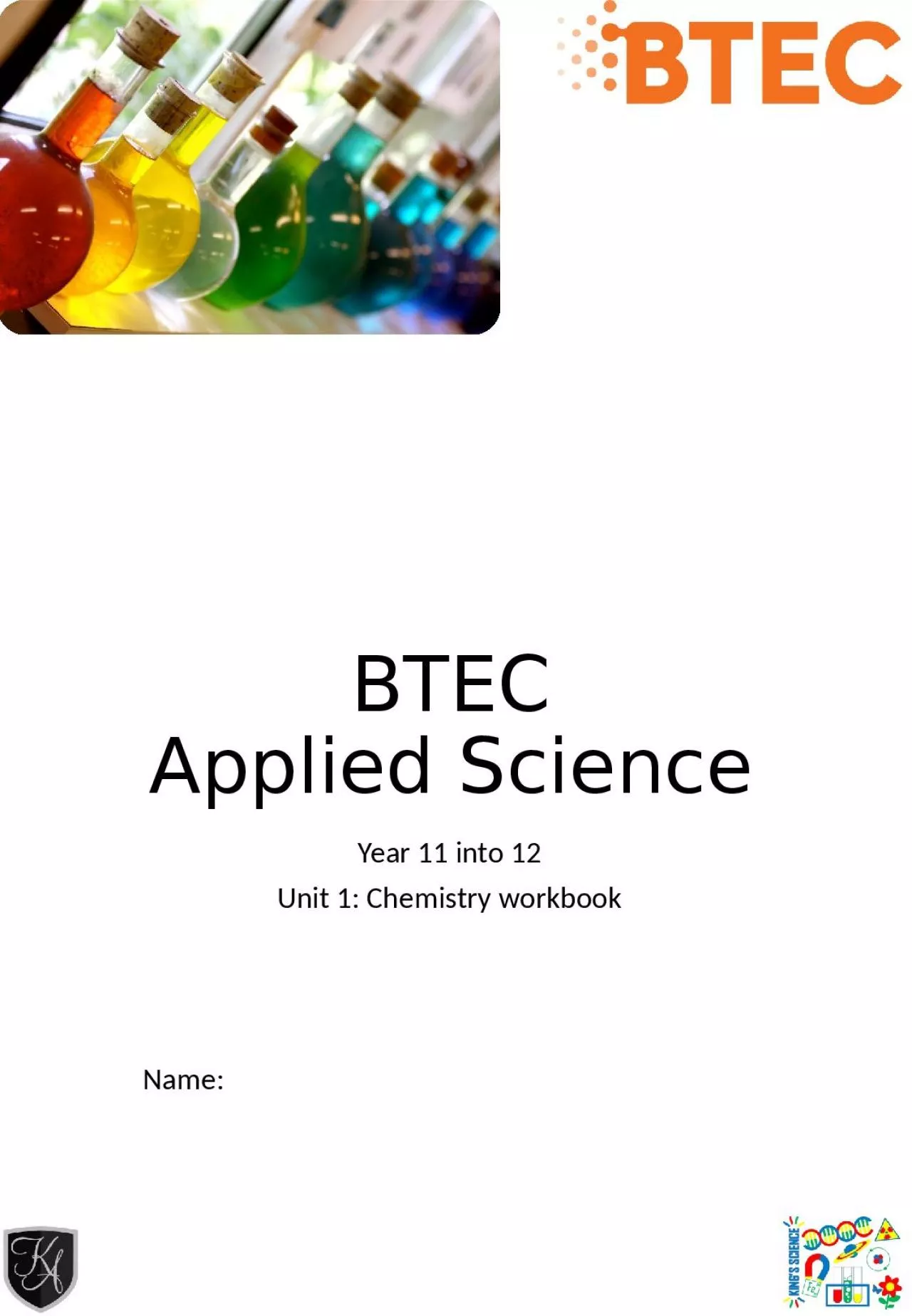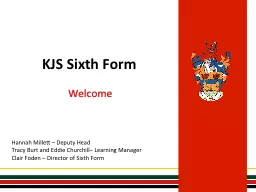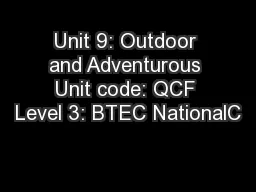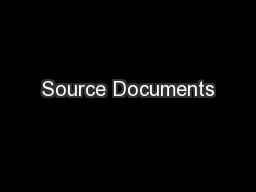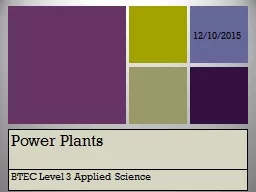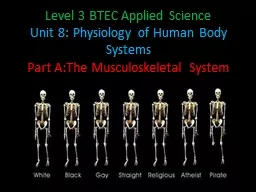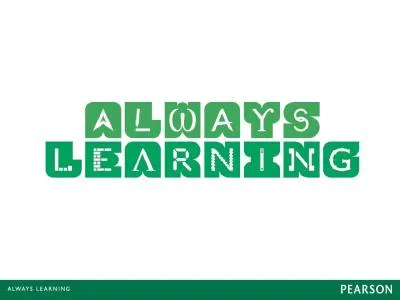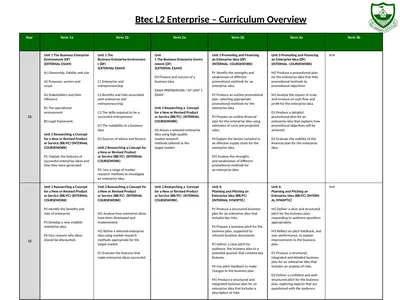PPT-BTEC Applied Science Year 11 into 12
Author : cora | Published Date : 2023-11-17
Unit 1 Chemistry workbook Name Elements compounds mixtures Key word Element Compound Mixture Mole cule Definition Atoms of different elements chemically
Presentation Embed Code
Download Presentation
Download Presentation The PPT/PDF document "BTEC Applied Science Year 11 into 12" is the property of its rightful owner. Permission is granted to download and print the materials on this website for personal, non-commercial use only, and to display it on your personal computer provided you do not modify the materials and that you retain all copyright notices contained in the materials. By downloading content from our website, you accept the terms of this agreement.
BTEC Applied Science Year 11 into 12: Transcript
Download Rules Of Document
"BTEC Applied Science Year 11 into 12"The content belongs to its owner. You may download and print it for personal use, without modification, and keep all copyright notices. By downloading, you agree to these terms.
Related Documents

